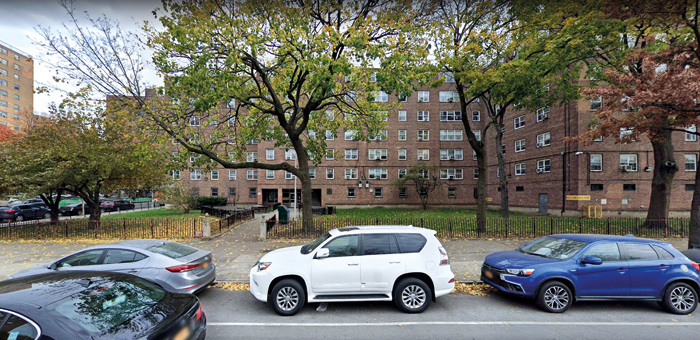Photo Courtesy of Google
Josephine Sanchez, 70, was murdered in November 1994 on the grounds of the Ravenswood Houses in Long Island City.
By Forum Staff
Queens District Attorney Melinda Katz has filed a joint motion with defense counsel to vacate the murder conviction of a man who has been incarcerated for nearly 26 years for a 1994 homicide in the Ravenswood Houses in Long Island City, Katz announced Thursday.
The motion is based on newly discovered witnesses and the results of agreed-upon DNA analysis which contradict “significant aspects” of the evidence used during trial testimony to convict Ernest “Jaythan” Kendrick. The new DNA testing—which was not available in 1995—revealed that the victim’s DNA was not found on or inside a black purse that was recovered in Kendrick’s apartment and believed to have belonged to the victim.
According to court records, on Nov. 30, 1994, a 70-year-old woman was stabbed twice in the back by someone trying to steal her purse on the grounds of the Ravenswood Houses. Witnesses heard the victim, Josephine Sanchez, scream and looked out their windows. A 10-year-old witness provided a description of the assailant—his clothing and his direction of flight to the police.
Katz said Kendrick was detained by police several hours after the murder because he loosely fit the description provided by the 10-year-old child. This youngster initially identified someone else when he viewed a live lineup that included Kendrick. However, after leaving the viewing room—and under disputed circumstances—the boy changed his selection to Kendrick.
According to court records, Kendrick was interrogated by the police over the course of several days. He consistently maintained his innocence but made several statements that detectives found suspicious. Additionally, during their canvas, police obtained a statement from a second witness who told police that he saw Kendrick fleeing the murder scene with a black purse under his arm.
Absent physical evidence tying Kendrick to the crime, Katz has indicated that she has concluded that the defendant was convicted based largely on the following:
The 10-year-old’s identification of Kendrick as the assailant and testimony that the black purse recovered from the defendant’s apartment appeared similar to what he saw taken from the victim.
The second witness’s testimony that he saw Kendrick running past him with a black purse under his arm.
According to the motion filed today, the jury that convicted Kendrick did not hear the following evidence that would have changed the outcome of the trial:
Forensic DNA test results, which excluded the victim from DNA detected on or inside the recovered black purse.
Four new witnesses who undermine the credibility of the second witness’ testimony that he saw Kendrick run past him with a black purse: a neighbor who lived directly below the 10-year-old’s apartment saw the assailant flee in the opposite direction from where the second witness claimed to have seen Kendrick run; two witnesses who were the first to approach the victim and render aid contradict the second witness’s account of seeing the victim alone; a new witness, whose apartment the second witness claimed to have been visiting has stated that she was not at home at the time the second witness stated that he was with her.
Taken together, Katz said, these new witnesses and the exculpatory DNA results create a reasonable probability that the jury would have acquitted Kendrick.

